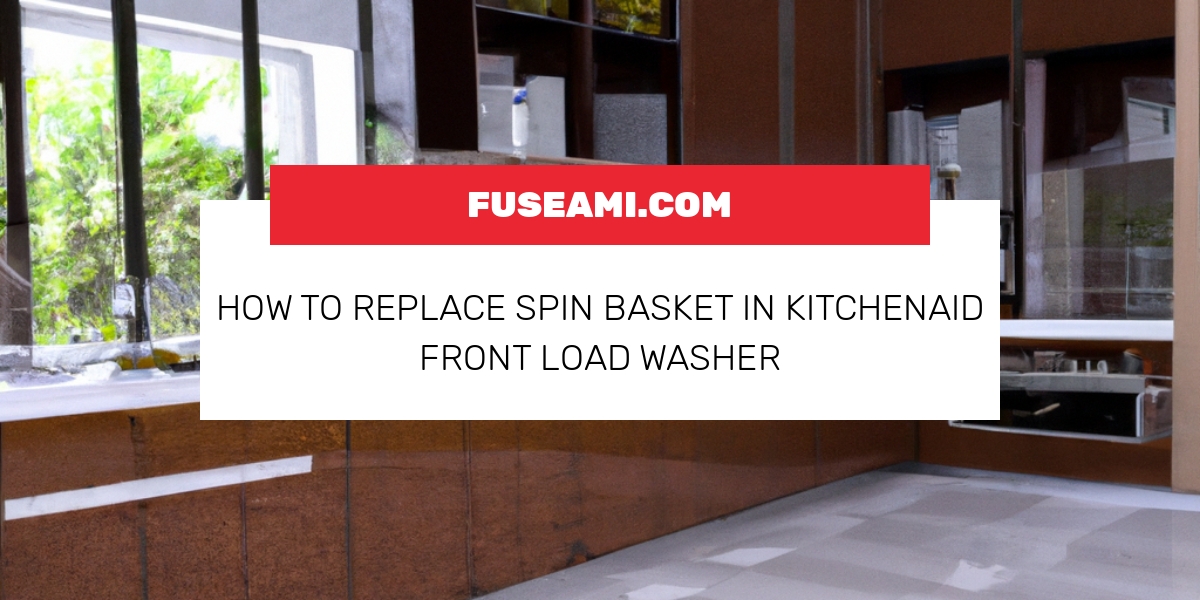This KitchenAid washer repair guide will show you how to replace the spin basket on a top-load washer. The spin basket helps hold garments throughout the wash cycle. If the spin basket gets damaged in the point of attachment to the hub and creates an loud banging or rubbing sound during spin cycles then replace it. If your basket appears chipped or has spots of rust It is possible to replace it. Rust may cause marks to your clothes.
If the spin basket is damaged or rusted, replace it using a manufacturer-approved replacement part. Switch off the power and water by disconnecting the power cord from the wall outlet. Shut off the water supply valves for the KitchenAid washer. Make sure your hands are protected with gloves. Help someone lift the KitchenAid washer off the wall.
Remove the top panel
Close the lid with tape so that it doesn’t open and cause damage to the control console. The screws that hold the top of the KitchenAid washer’s two hinge brackets to the back must be removed. The wire cover is removed from the KitchenAid washer by removing the screw. Slide the top panel forward approximately half an inch, then raise the front of the panel about a quarter inch. The panel should remain slightly raised and push it back about quarter inch to remove the brackets. Take the top panel off and set it against the wall, behind the KitchenAid washer. To remove the tub ring, take the bottom off the tub ring and release it from the tabs that lock. If needed, you can employ the slot screwdriver. Pull the tub ring out from the KitchenAid washer. Remove the impellerby inserting a slot screwdriver through the notch in the cap’s base. cap.
Remove the cap off of the impeller:
To pull out the bolt that connects the impeller to the motor shaft, use a wrench or socket. Grab the impeller with your hands and then remove it from the KitchenAid washer. Pull the spin basket out of the washer tub: Place the spanner wrench on top of the spanner nut , so that the wrench’s teeth touch the nut’s notches. Use the spanner wrench’s arms to strike the spanner wrench using an hammer to loosen up the spanner nut. Then , spin the spanner nut until it is free, then remove it from the washer. Make sure you pull straight upwards on the spin basket to lift it from the tub in the washer.
Set up the spin basket:
The spin basket should be placed on the top of the shaft. After that, you’ll have to work the spin down until the shaft is fully covered. Place the spanner nut in the appropriate position and then thread it into the bottom of the spin basket. By hand, tighten the spanner nut and then make use of the spanner wrench squeeze the spanner nut. Utilizing a moderate force, hit the the spanner wrench using an hammer to tighten the spanner nut. Install the impeller once more. Put the impeller onto the top of your drive motor shaft until it’s fully settled. Insert the bolt , and tighten it with a firm. Reattach the cap the top of the impeller. Install the tub ring again: Place the tub ring on the top of the outer tub and push it down. Then press down over the locking tabs until the tabs snap into the locked position.
Reinstall the top panel:
Take care to lower the top panel. Push the panel back approximately a quarter inch to engage the brackets. Reverse the panel by one quarter inch to lock it flush with the frame. Take the tape off the lid of the washer. The screws should be inserted back into the hinges at the top on the back of control console. Lock the screws tightly. The tabs should be put on the left side. Next to align the slots to the left. Place the mounting screw. The mounting screw should be tightened to fix the cover to its the right position. Bring back power and water by turning on the water supply valves.
Connect the washer to the electrical outlet. Then, return the KitchenAid washer to its original place. The washer can be calibrated by turning the control dial counterclockwise, one time. In about six seconds, rapidly turn the control dial three clicks clockwise, one counterclockwise and one more clockwise. All the green status lights blink when you activate the diagnostic mode. For a reset, you must make an entire rotation of the dial counterclockwise. If the status lights don’t blink, move the knob back faster. Choose the Calibration Cycle in the diagnostic mode by turning the dial four times clockwise. Once the Rinse Light comes on Press Start to start the Calibration Cycle, which runs for about 2 to 3 minutes. Once the Calibration Cycle is completed the lid is unlocked and the washer shuts off.



